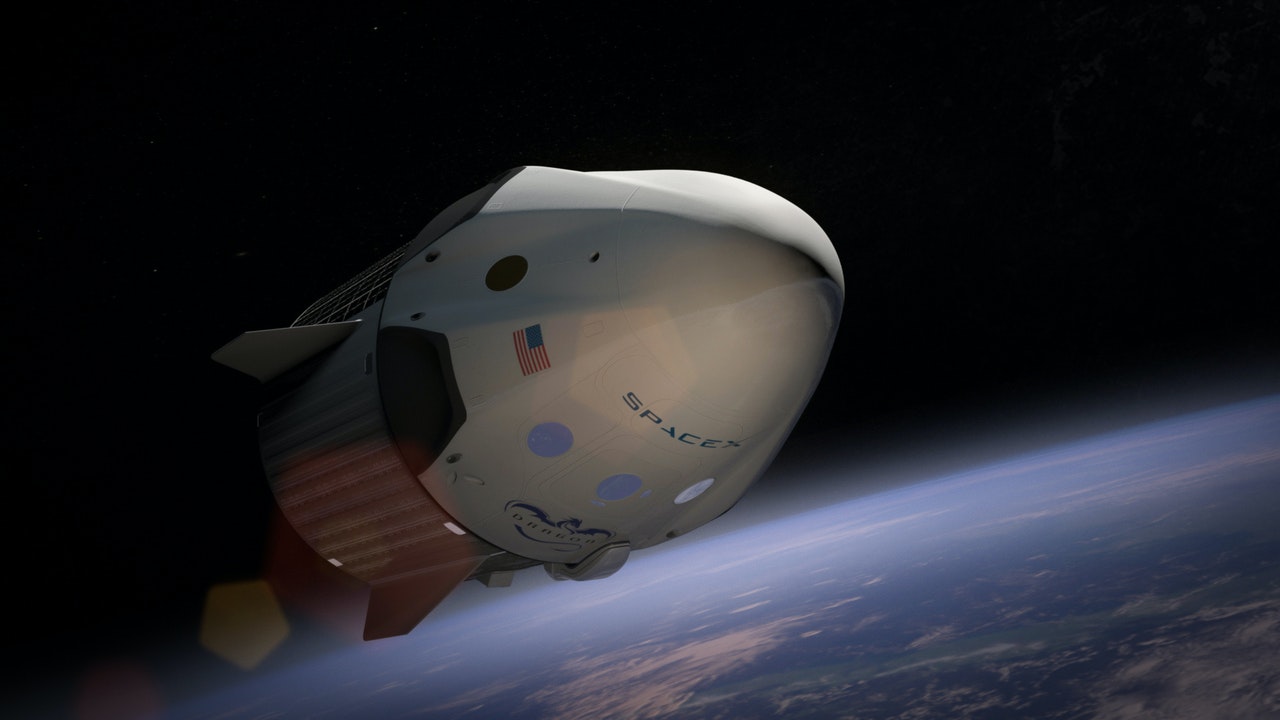It turns out that SpaceX will arrive on the moon’s surface ahead of schedule. Elon Musk’s business supplies the landing technology for NASA’s Artemis lunar exploration program’s first crewed touchdown, which the agency wants to complete in 2025. However, a piece of SpaceX gear will strike the ground much sooner – in around five weeks.
Satellites have calculated that the top stage of a SpaceX Falcon 9 rocket launched in February 2015 will collide with the moon on March 4, according to Ars Technica’s Eric Berger (Jan. 24). Bill Gray, who leads Project Pluto, a firm that provides software to professional and amateur astronomers, led the watchers.
The Deep Space Climate Observatory (DSCOVR), a cooperative initiative of the US National Oceanic and Atmospheric Administration and NASA, was launched by the rocket in question. From the Earth-sun Lagrange Point 1 (L1), a gravitationally stable position around 930,000 miles (1.5 million kilometers) from Earth in the sunward direction, DSCOVR examines our planet and the space weather environment. (NASA’s $10 billion James Webb Space Telescope has just arrived at L2, 930,000 miles from Earth in the opposite direction, on its way to Mars’ orbit.)
After launch, SpaceX sends Falcon 9 upper stages back into Earth’s atmosphere, where they die in a fiery death. (SpaceX’s Falcon 9 and Falcon Heavy rockets are well-known for landing and reusing their first stages.) However, at the DSCOVR launch, the business had yet to score a first-stage touchdown; the first such success happened in December 2015.)
However, Berger reported that the top stage was so high after sending DSCOVR on its journey that it didn’t have enough fuel to return to its home planet. For over seven years, it’s been drifting around the Earth-moon system in a lengthy and looping orbit.
It’s almost time for it to end. Gray projected that the stage collide with the moon on March 4 at 7:25 a.m. EST, based on data obtained by several other observers (1225 GMT). The impact on the lunar farside, at a latitude of 4.93 degrees north and a longitude of 233.20 degrees east.
“At a guess,” Gray said in a blog post on the upcoming impact, “the above estimate may be incorrect by a degree or two minutes from the expected time,” highlighting the difficulties of predicting precisely how solar pressure moves a tumbling, cylindrical item like a rocket stage.
“In early February, we’ll need (and I’m optimistic will obtain) more data to refine the prediction; this will considerably reduce the uncertainty,” he continued.
The impact will not be seen from Earth since it will take place on the moon’s far side. However, pinpointing the collision’s time and position is crucial, since it may allow moon-orbiting spacecraft like NASA’s Lunar Reconnaissance Orbiter (LRO) and India’s Chandrayaan 2 to analyze the ensuing crater — “and, if we’re lucky, maybe picture the impact,” according to Gray.
Tweets that validate the Gray’s figures
“Yes, an old Falcon 9 second stage that got abandoned in high orbit in 2015 will reach the moon on March 4th. It’s intriguing, but it’s not an issue, “Jonathan McDowell, an astronomer and satellite tracker at the Harvard-Smithsonian Center for Astrophysics in Cambridge, Massachusetts, tweeted on Tuesday (Jan. 25).
In another tweet, he said that objects “left in cislunar orbit are unstable And would ultimately either strike the moon or the Earth or get perturbed to solar orbit.” (The term “cislunar” refers to the space between the Earth and the moon.)
If orbital dynamics hold, the upcoming impact will be the “first example of a Regolith Unplanned Disassembly,” SpaceX principal integration engineer John Insprucker tweeted on Monday, invoking Musk’s RUD acronym for the destruction — or “rapid unplanned disassembly” — of a rocket during testing here on Earth.
In a subsequent tweet, Insprucker, who conducts many of SpaceX’s launch webcasts, stressed that the imminent impact is the company’s first lunar RUD, not the first overall. Many spacecraft have mistakenly collided with the moon throughout the years. For example, both Israel’s Beresheet probe and the Chandrayaan 2 lander failed during their attempts to arrive on the moon in 2019.
The top stage of the Falcon 9 will not be the first rocket to reach the moon. During the Apollo program, for example, NASA guided the stages of Saturn V rockets to the moon. In 2009, the CIA deliberately crashed the Atlas V rocket’s upper stage into a crater near the moon’s south pole, launching LRO.
As a result of the collision, water ice was blasted from the moon’s polar regions, showing that the resource is plentiful.
The Falcon 9 stage, according to Gray, is intended for a somewhat dull (by comparison) area of the moon. Its effect, on the other hand, might yield information on lunar geology.
As we calculate the mass of an empty Falcon 9 rocket [about 4 tons] and that it will impact at 2.58 km/s [5,700 mph, or 9,290 kph]; knowing the motion and energy of the object that causes the crater should allow adjusting the crater size vs. energy function,” Gray added.
The Bottom Line
A SpaceX Falcon 9 rocket bursts into orbit from Florida’s Cape Canaveral Air Force Station on February 11, 2015, carrying the Deep Space Climate Observatory on a million-mile mission to Lagrange Point 1. The upper stage booster will reach the moon on March 4, 2022.
